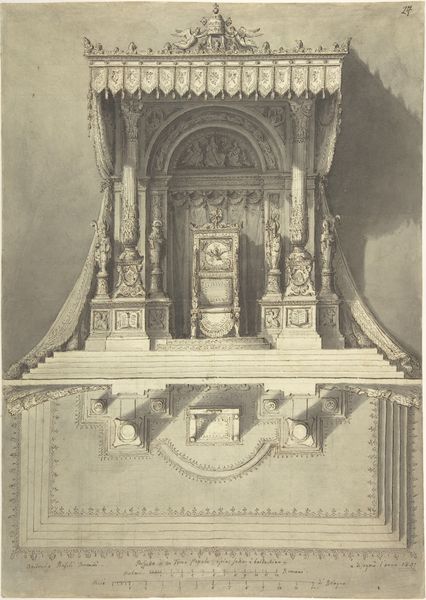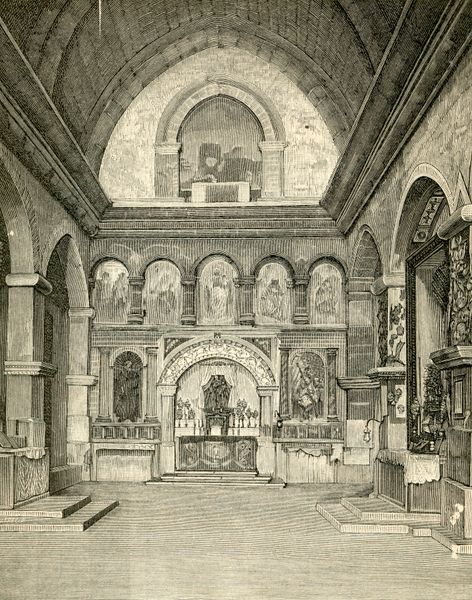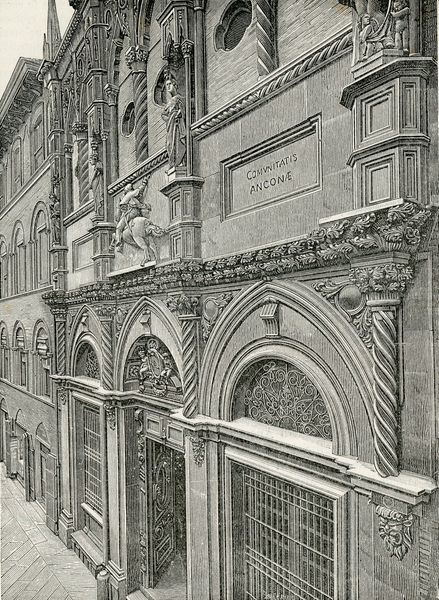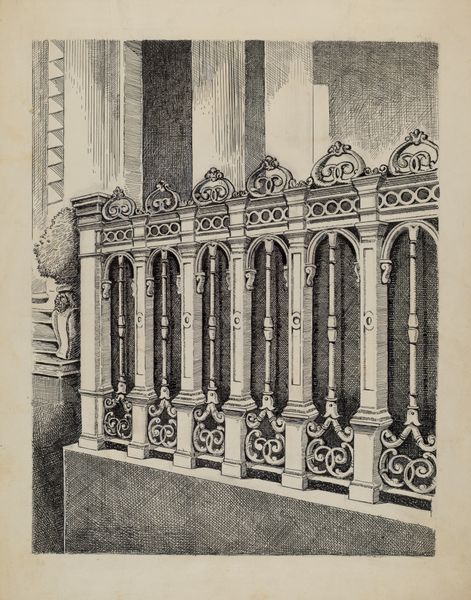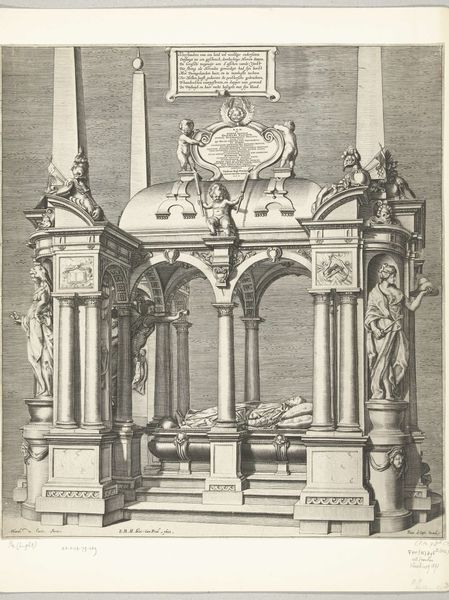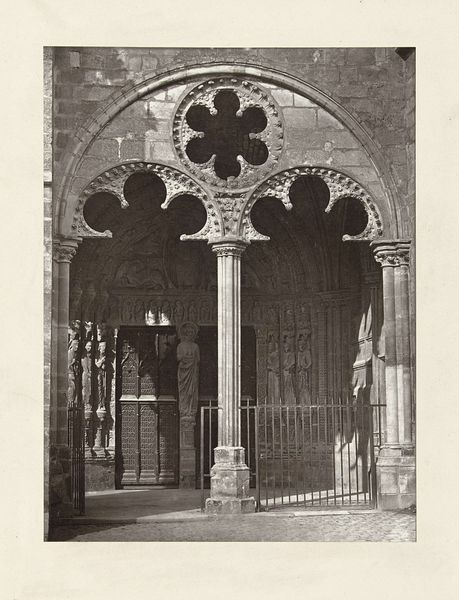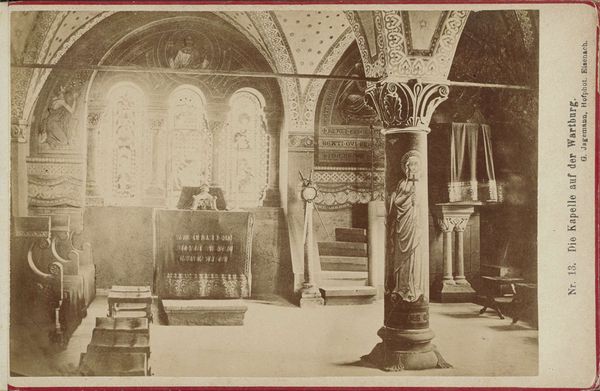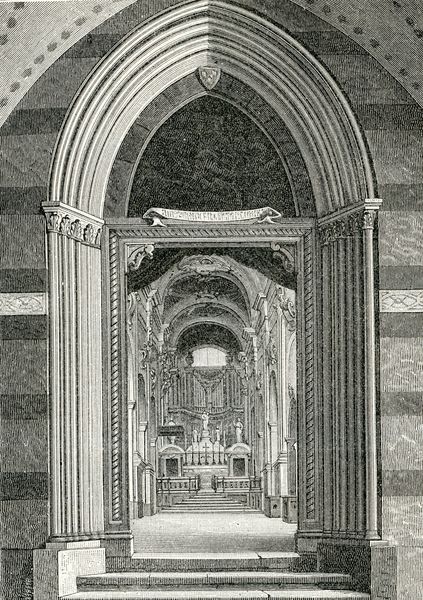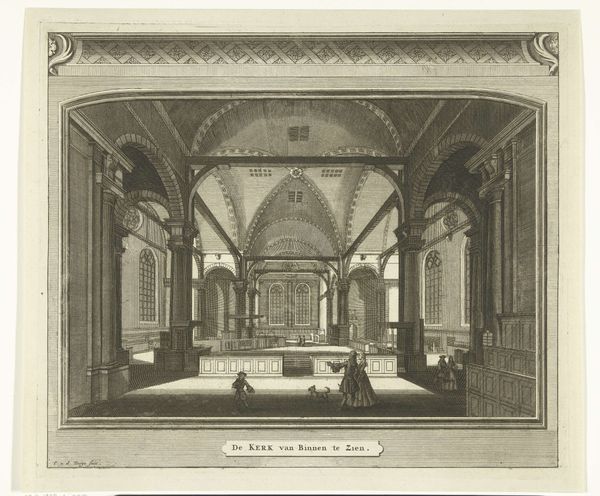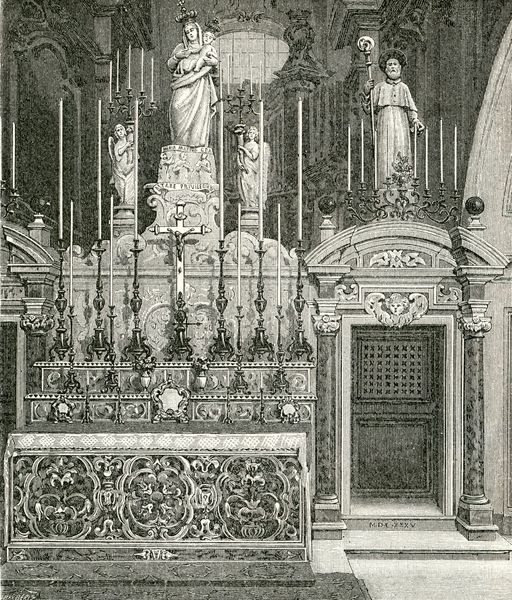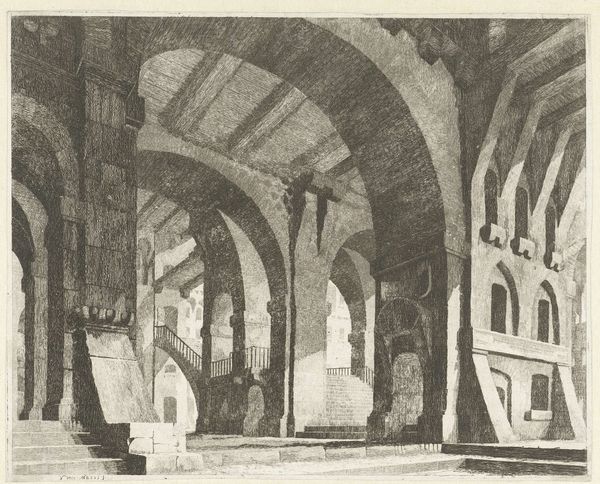
drawing, paper, ink, architecture
#
drawing
#
medieval
#
paper
#
ink
#
geometric
#
academic-art
#
architecture
#
realism
Copyright: Public domain
Editor: We’re looking at "Coro Di M. Corrado Teutonico," a drawing by Giuseppe Barberis from 1898. It’s done in ink on paper and depicts a detailed architectural structure. The intricacy of the design is what really grabs me. How would you interpret this work? Curator: Well, the immediate thing that strikes one is the masterful employment of line. Note how the varying densities articulate form, lending three-dimensionality to the architectural elements despite the two-dimensional medium. What do you observe about the relationship between geometric precision and organic embellishment? Editor: I see what you mean. There’s this rigid structure with the arches, but then these very fluid, almost floral carvings all over it. It seems to blend both together, academic-art and realism. Curator: Precisely. This tension introduces visual interest, creating a dynamic relationship between order and exuberance. Notice how the arches establish a sense of rhythm, a visual cadence echoed in the repeated motifs below. One could say the interplay reflects a dialogue between control and freedom of form. Editor: So it's more about how these elements work together to create the piece than, say, what it's trying to depict, a real place? Curator: Indeed. Our focus should be directed toward understanding the composition itself, rather than relying solely on its representational nature. Editor: This has highlighted the dialogue between structure and ornament, form and content, that I hadn’t considered before. Thanks for the lesson! Curator: My pleasure. Appreciating these inherent qualities allows us to unlock a deeper aesthetic experience.
Comments
No comments
Be the first to comment and join the conversation on the ultimate creative platform.
